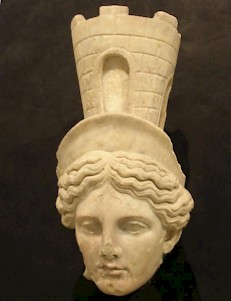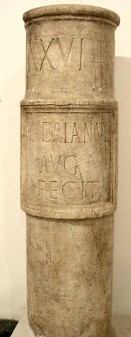Italica
Q658893Italica: Roman colony in western Andalusia, not far from Seville.

Italica was founded in 206 BCE during the Second Punic War (218-202), Rome's war against Hannibal. According to Appian of Alexandria, the Roman commander Publius Cornelius Scipio settled his Italian veterans on this site, which was close enough to the Guadalquivir to control the area.note
Although the nearby native city Hispalis (Seville) would always remain a larger city, Italica was also an important center of Roman culture. The town was proud of its heritage, using the image of Romulus and Remus on its coins. It had a theater and an amphitheater.
Several famous Romans were born in Italica. It has been assumed that the poet Silius Italicus was among them, but this is not really certain.

However, the emperors Trajan (ruled 98-117) and his distant relative Hadrian (117-138) were certainly born in this town. The latter gave the town the rights of a colonia and was one of the great builders in the town, ordering the construction of a new elite quarter with several beautiful (and expensive) houses, which were decorated with splendid mosaics. However, he appears not to have liked his native place: once emperor, he made a large tour through the western provinces - Germania Superior, Germania Inferior, Britannia, the Spanish parts of the empire - and even spent some time in Seville, but he did not visit Italica, even though it was only a few kilometers away.

Among the other contributions of Hadrian to his hometown are the reconstruction of a road, as is shown by a milestone that was excavated near Italica. The inscription Hadrianus Aug[ustus] fecit means that the emperor Hadrian ordered the construction of the road. The main products of the Italican economy, stone and olive oil, were carried to the river port along this road. The inscription is now in the Museo Arqueológico of Seville.
Among the military units attested in Italica are the Seventh legion Geminanote and the Third cohors Gallica.
A shift of the course of the Gudalquivir caused the city's decline. Still, Italica was important enough in late Antiquity to have a bishop of its own. It appears to have had a garrison during the Visigothic age. After the Muslim conquest, however, Seville eclipsed its neighbor.